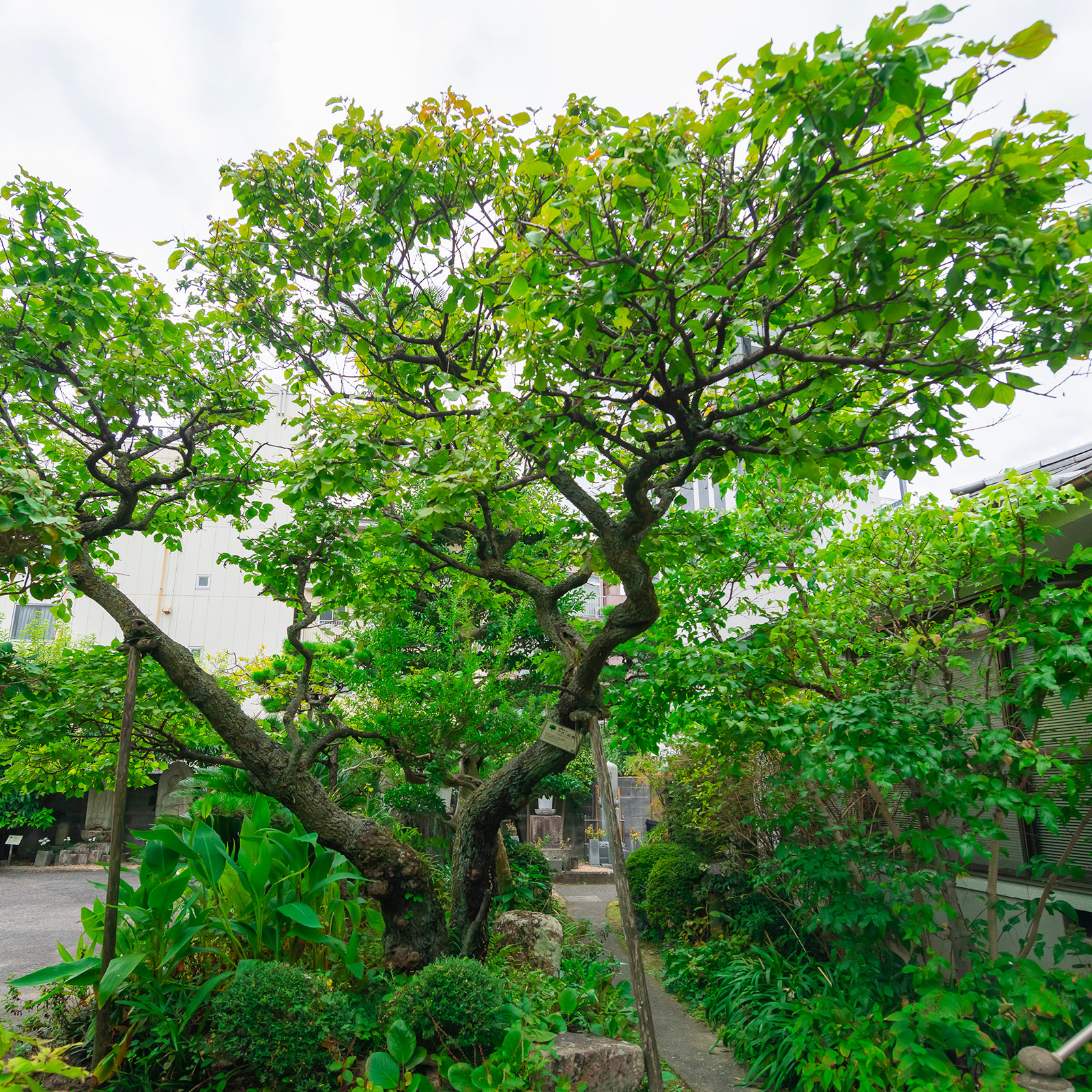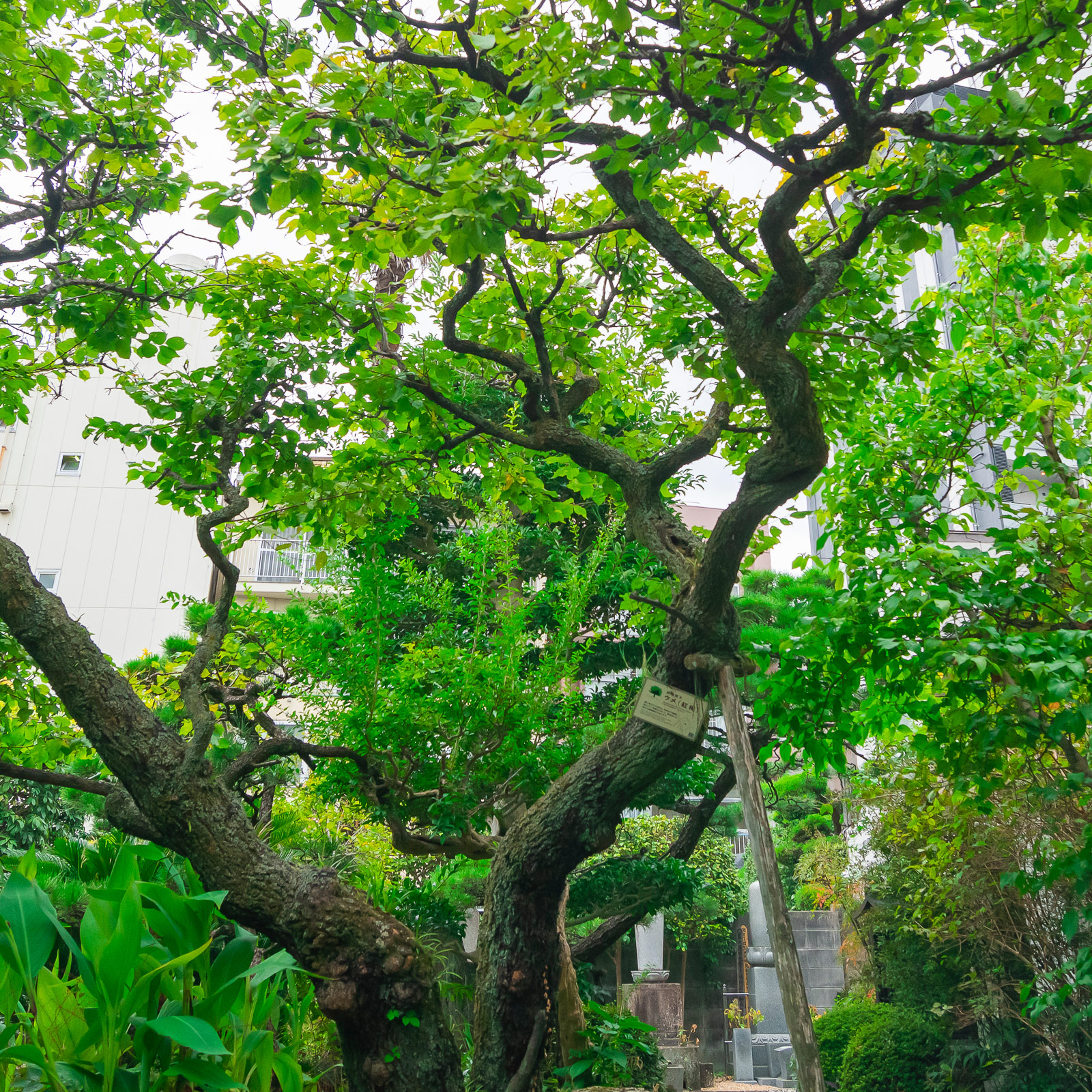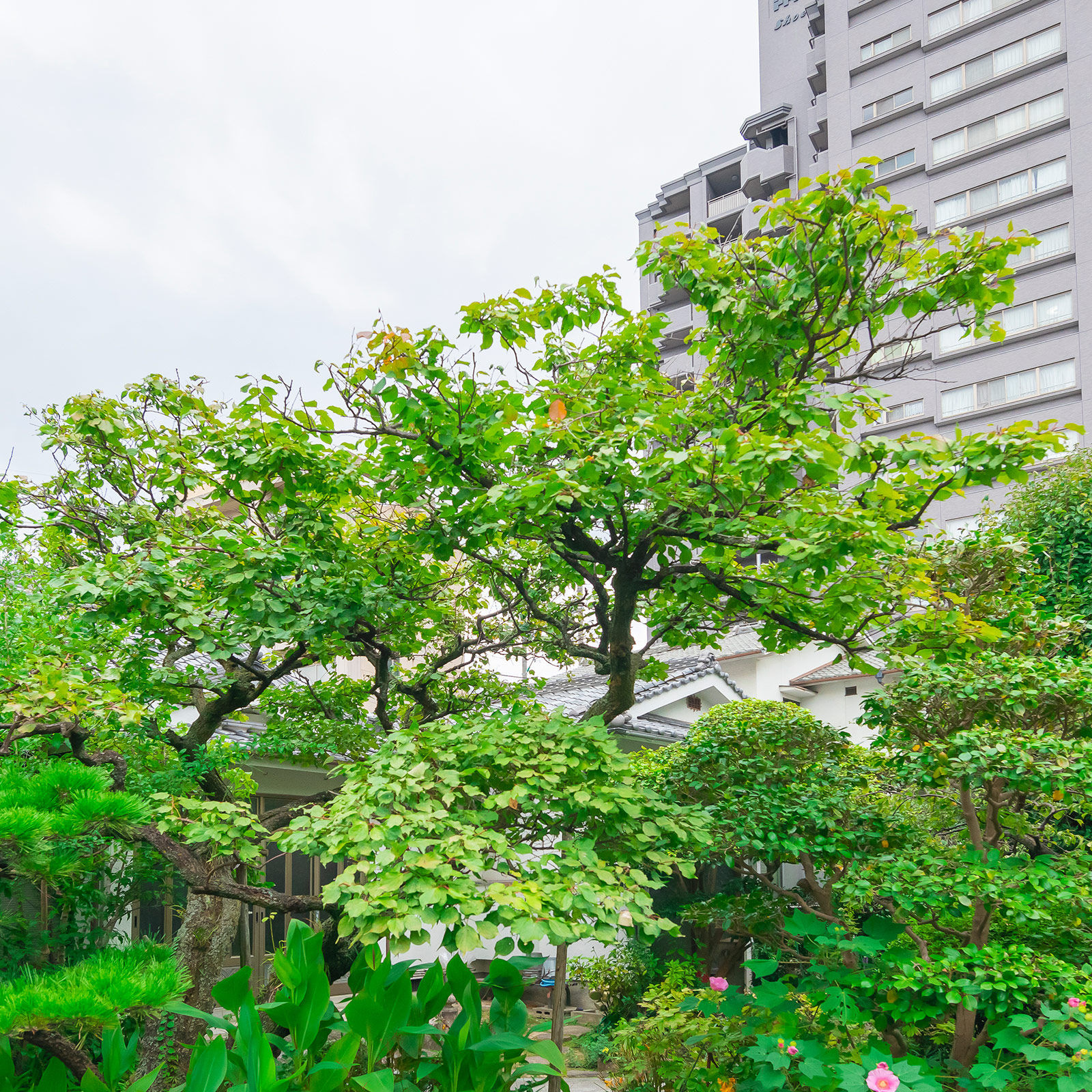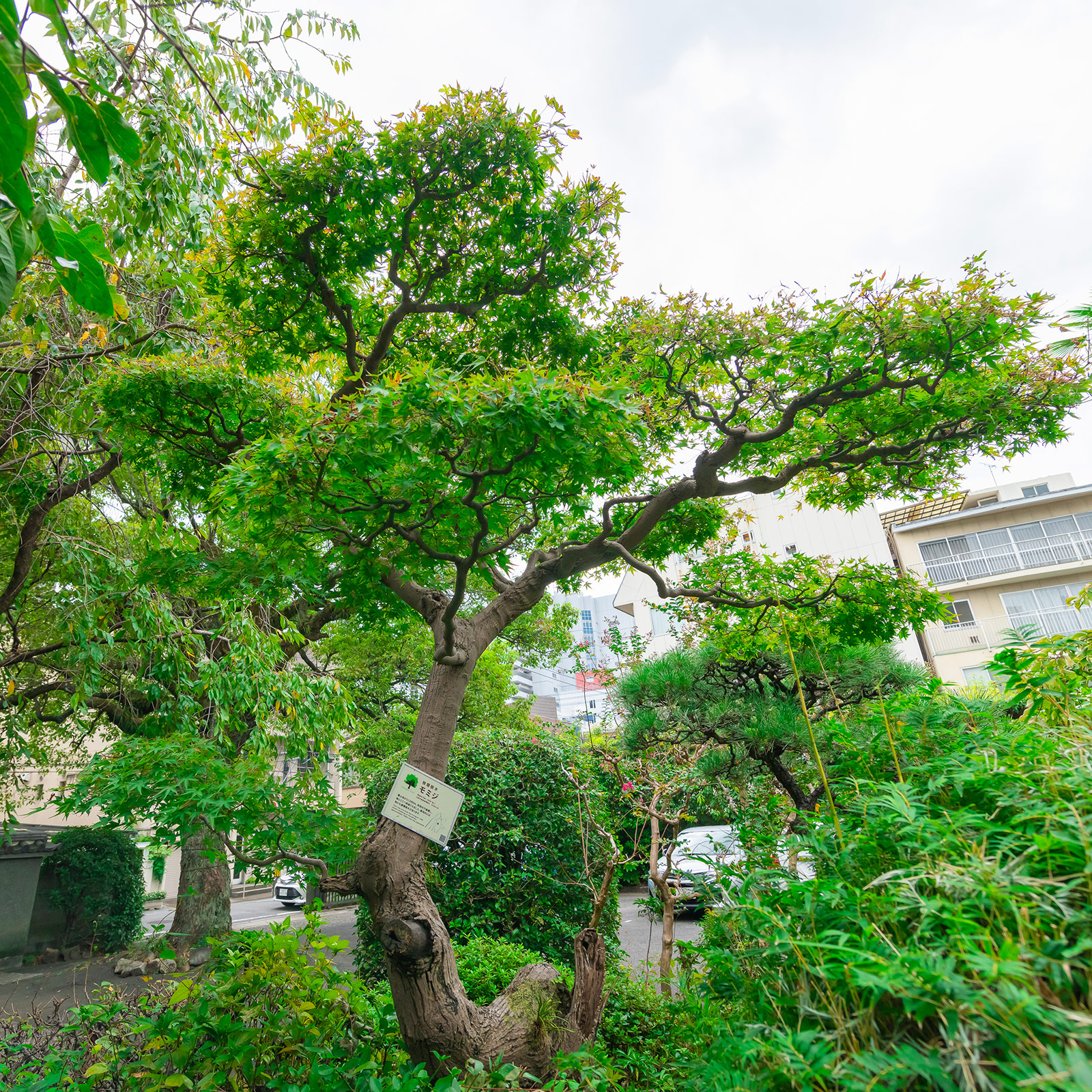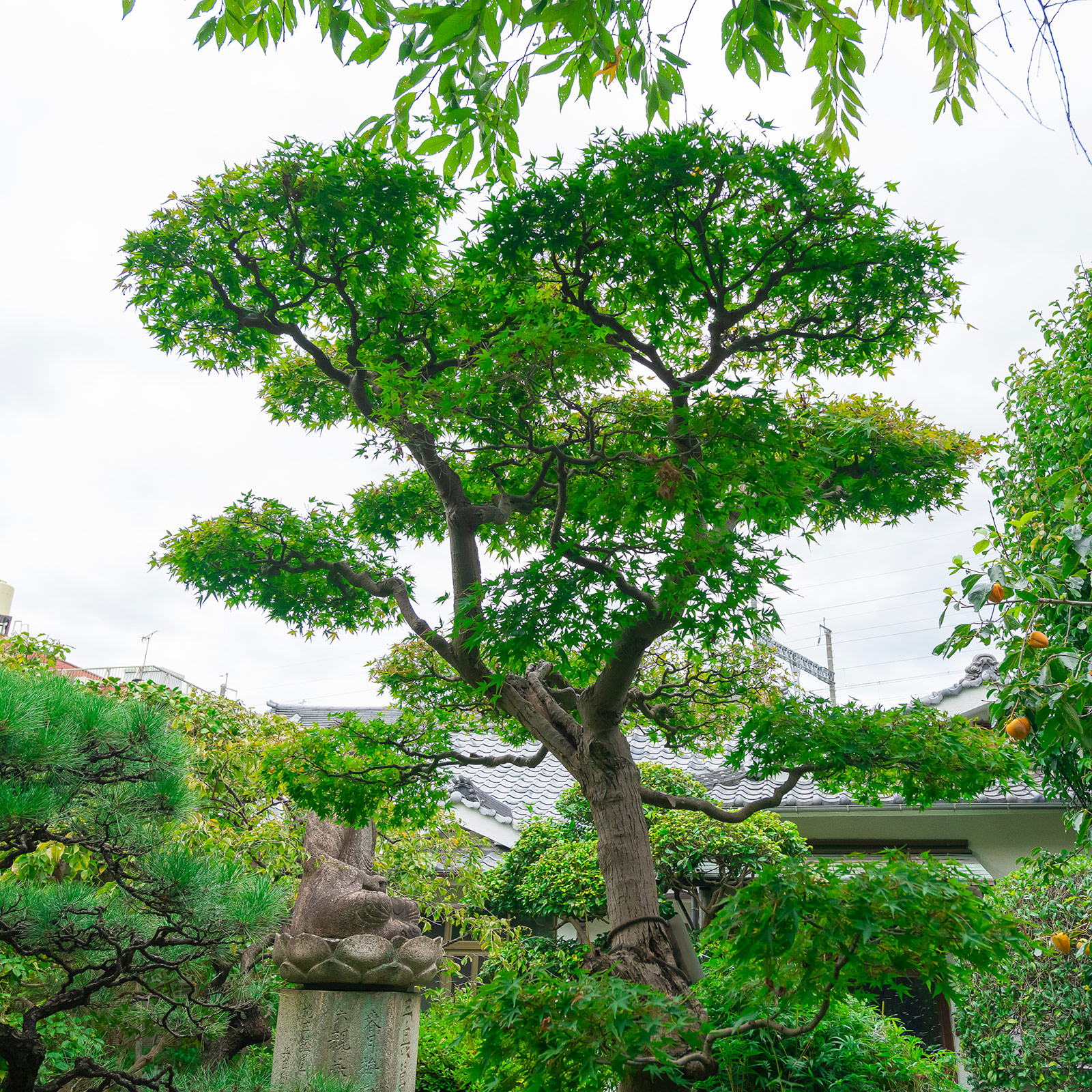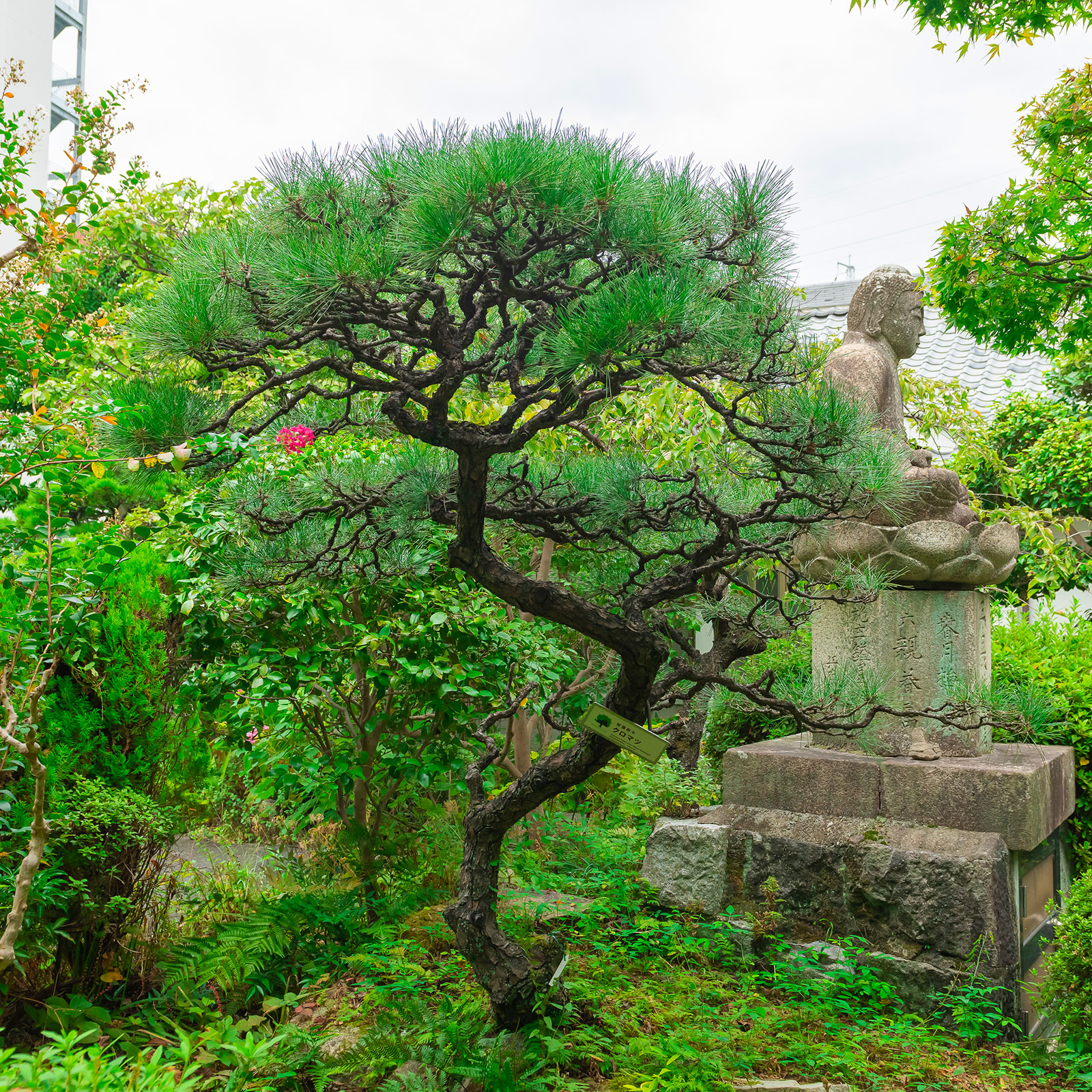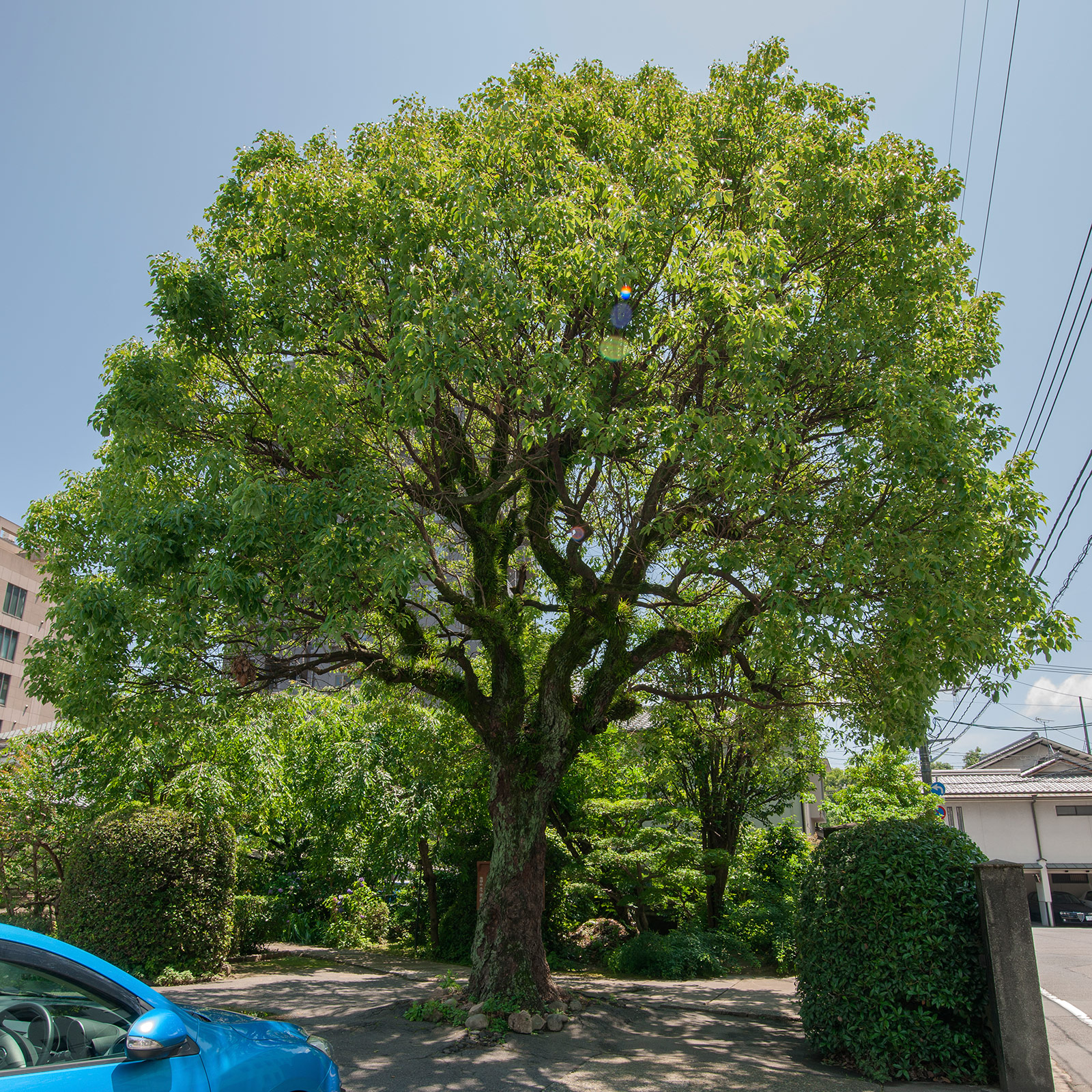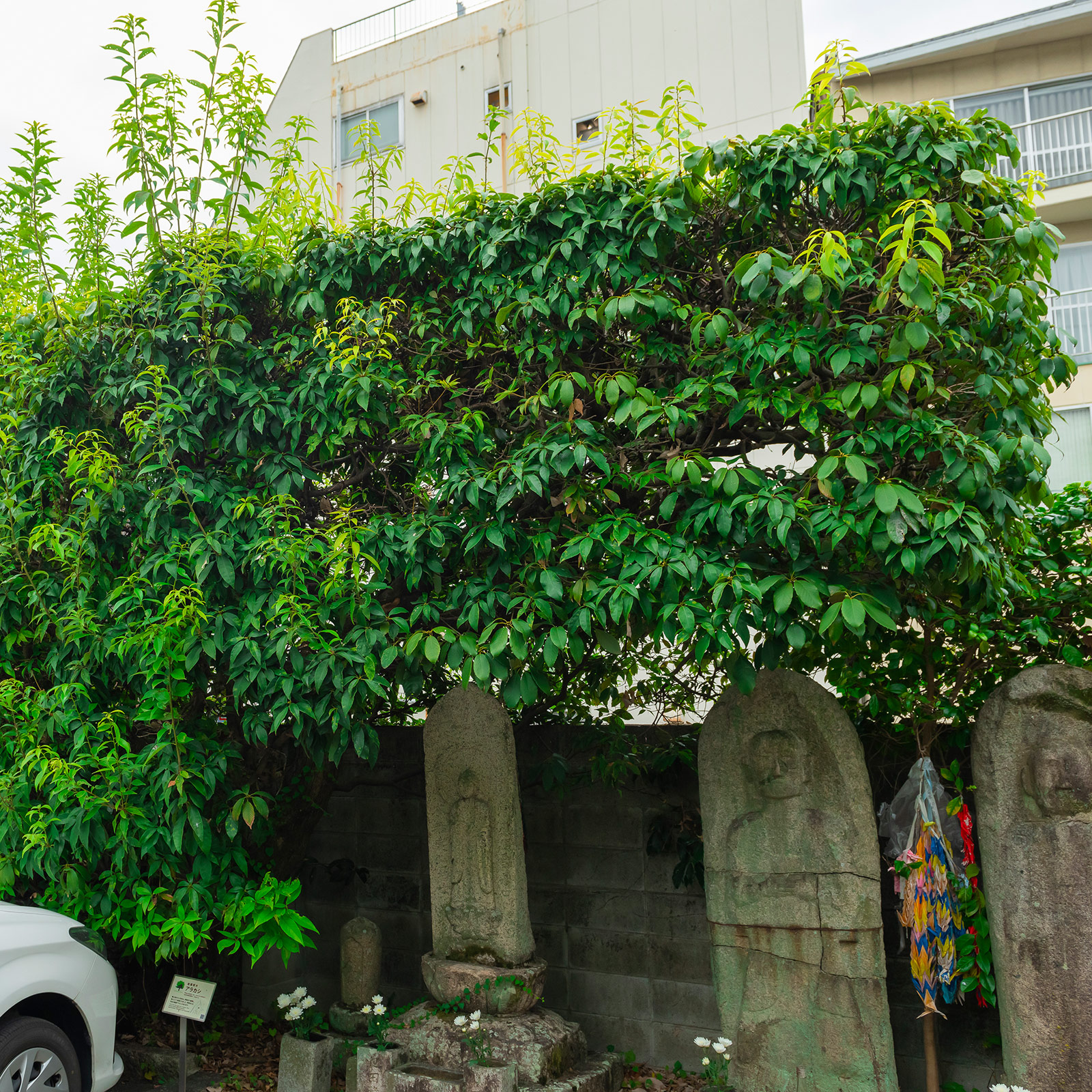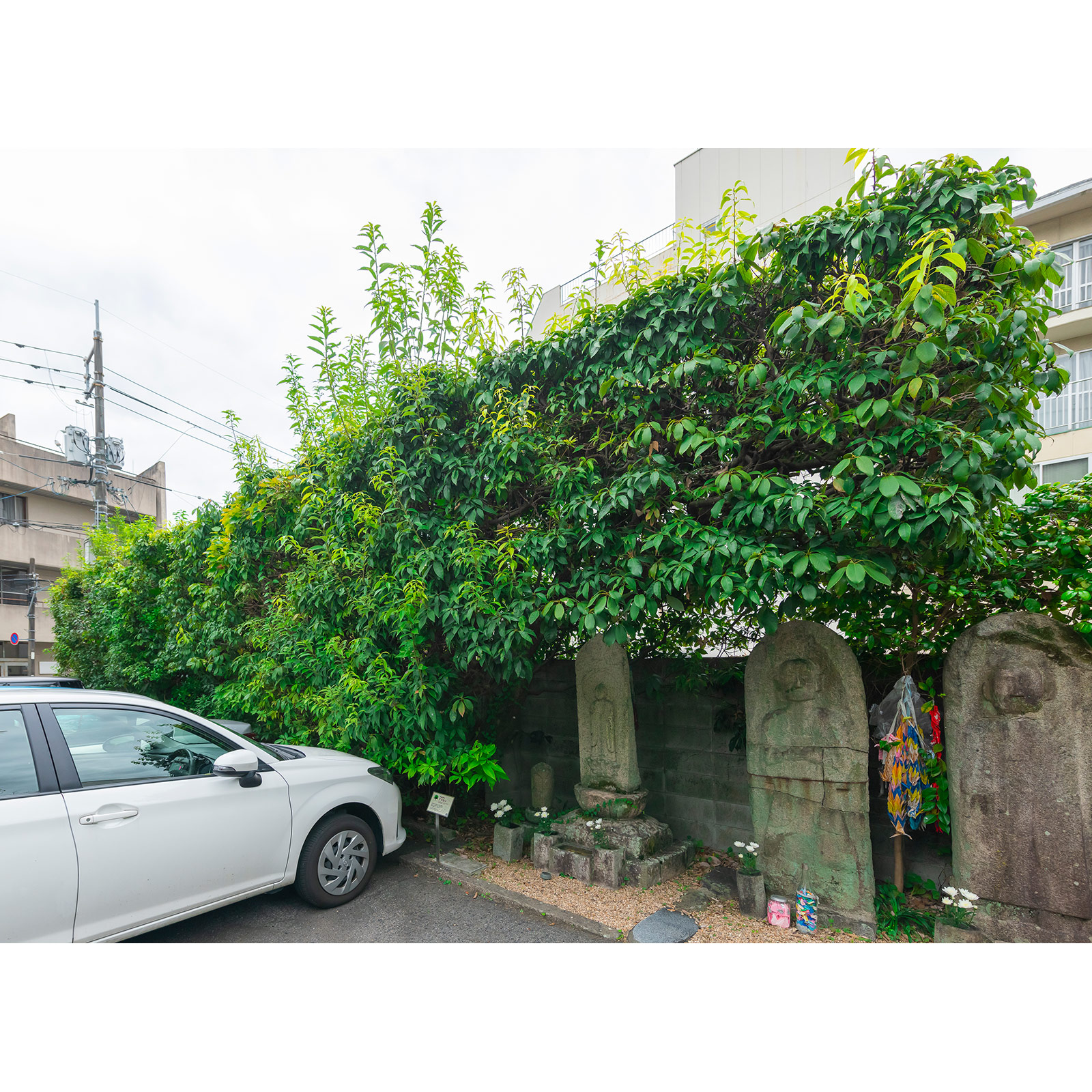禿翁寺(とくおうじ)の境内には、12本の被爆樹木が立っています。1953年、新しい本堂の建設に伴い、裏庭で被爆しながらも生き残った木々が、現在の場所に移植されました。入口に立っている大きなクスノキは、幹肌(みきはだ)がささくれ、樹皮の異常をうかがうことができます。駐車場の奥にあるコウバイは、幹の下のほうに瘤(こぶ)が数か所見られますが、毎年春になると淡いピンク色の花を咲かせます。そのほか、8本のアラカシとモミジ、クロマツが被爆樹木です。境内には、原爆によって六体から五体になった、熱線の焦げ跡が残る石造りの六地蔵尊が佇んでいます。
※厳な場所ですので参拝者に迷惑になる行動は控えましょう。場合により立ち入りをご遠慮いただくことがあります。
There are twelve hibaku trees inside the Tokuō-ji Temple grounds. Together with the construction of a new main hall in 1953, the trees which survived the bombing were replanted in their current location. The bark on the large camphor tree by the entrance is splintered, evidence of the abnormality brought on by the bombing. The kōbai (red plum blossom) tree in the back of the parking lot has several knots at the bottom of its trunk, but each spring, light pink blossoms fill its branches. There are also eight Japanese blue oaks, maple trees, and Japanese black pines, all of which are hibaku trees. You can also find five stone jizō bodhisattva statues which bear blackened marks from the intense heat of the bombing; originally, there were six, but one was lost in the bombing.
